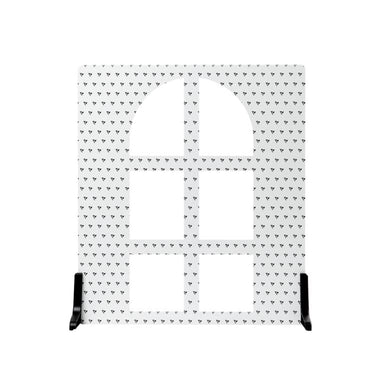6 Pro Pet Photography Tips
Quick view
Photographing pets can be incredibly rewarding, but it also requires patience, skill, and understanding of animal behavior. Whether you're shooting for fun or creating stunning portraits for clients, following these tips from famed pet photographer Adam Goldberg will help you capture the best photos of your furry subjects, while keeping them happy and stress-free.
1. Don’t Be Overbearing—Let the Dog Come to You
One of the most important things to remember when photographing dogs is to give them space. Being too eager or forceful can intimidate the animal, making it harder to get those natural, relaxed shots. Allow the dog to approach you and your camera at its own pace. Engage with them softly, offering treats or gentle petting, but don’t rush the process. This helps the dog feel comfortable in the environment, ensuring you get authentic, stress-free expressions.

2. Use High-Value Treats to Grab Their Attention
Every photographer knows that capturing a pet’s attention can be tricky. That's why using high-value treats, like cheese or small pieces of hot dogs, can be a game-changer. These treats are typically irresistible, and they’ll keep the dog focused on you. You can use them to lure the dog into different poses or to get them to look in a specific direction. Just be sure not to overfeed, and always check with the owner to make sure the treats are appropriate for the pet.

3. Adjust Lighting for Dogs Sensitive to Strobes
Not all dogs are comfortable with the flash of a strobe light, and some can even become frightened. If you notice that the dog is skittish or anxious when the strobe fires, consider lowering the power of your light and increasing your ISO to compensate. Alternatively, continuous lighting can be a great solution. It provides constant illumination without the sudden flash that might startle the animal, helping to keep the shoot calm and under control.

4. Travel Light with a Foldable V-Flat
For portable, professional pet photography, a foldable V-Flat is a fantastic tool. These lightweight boards are not only easy to transport, but they also serve multiple functions. You can use them as a clean black or white backdrop, eliminating the need to bring bulky seamless paper rolls and stands. Plus, they’re perfect for controlling light—whether you need to add fill light to reduce shadows or subtract light to create a more dramatic, moody effect. When traveling to shelters or clients' homes, V-Flats are a compact, convenient solution.

5. Let the Dog Sniff Your Camera
A camera can be an unfamiliar and intimidating object for many dogs, especially those who haven’t been around photographers before. To help ease any anxiety, let the dog sniff your camera before you start shooting. This allows them to investigate it, become more familiar with the new object, and understand that it’s not a threat. Once they’re comfortable with the camera’s presence, they’re more likely to relax and pose naturally.
6. Be Willing to Take a Break and Come Back Later
Patience is key when working with animals, and sometimes, despite your best efforts, the dog just won’t cooperate. If a dog is overly anxious, restless, or uninterested in the session, don’t force it. Take a break, let them relax, and try again later. Forcing the issue can make the dog uncomfortable, and that discomfort will show in your photos. It’s always better to work with the dog’s mood rather than against it, ensuring that the session is enjoyable for both of you.

Patience is key when working with animals, and sometimes, despite your best efforts, the dog just won’t cooperate. If a dog is overly anxious, restless, or uninterested in the session, don’t force it. Take a break, let them relax, and try again later. Forcing the issue can make the dog uncomfortable, and that discomfort will show in your photos. It’s always better to work with the dog’s mood rather than against it, ensuring that the session is enjoyable for both of you.











Leave a comment
This site is protected by hCaptcha and the hCaptcha Privacy Policy and Terms of Service apply.